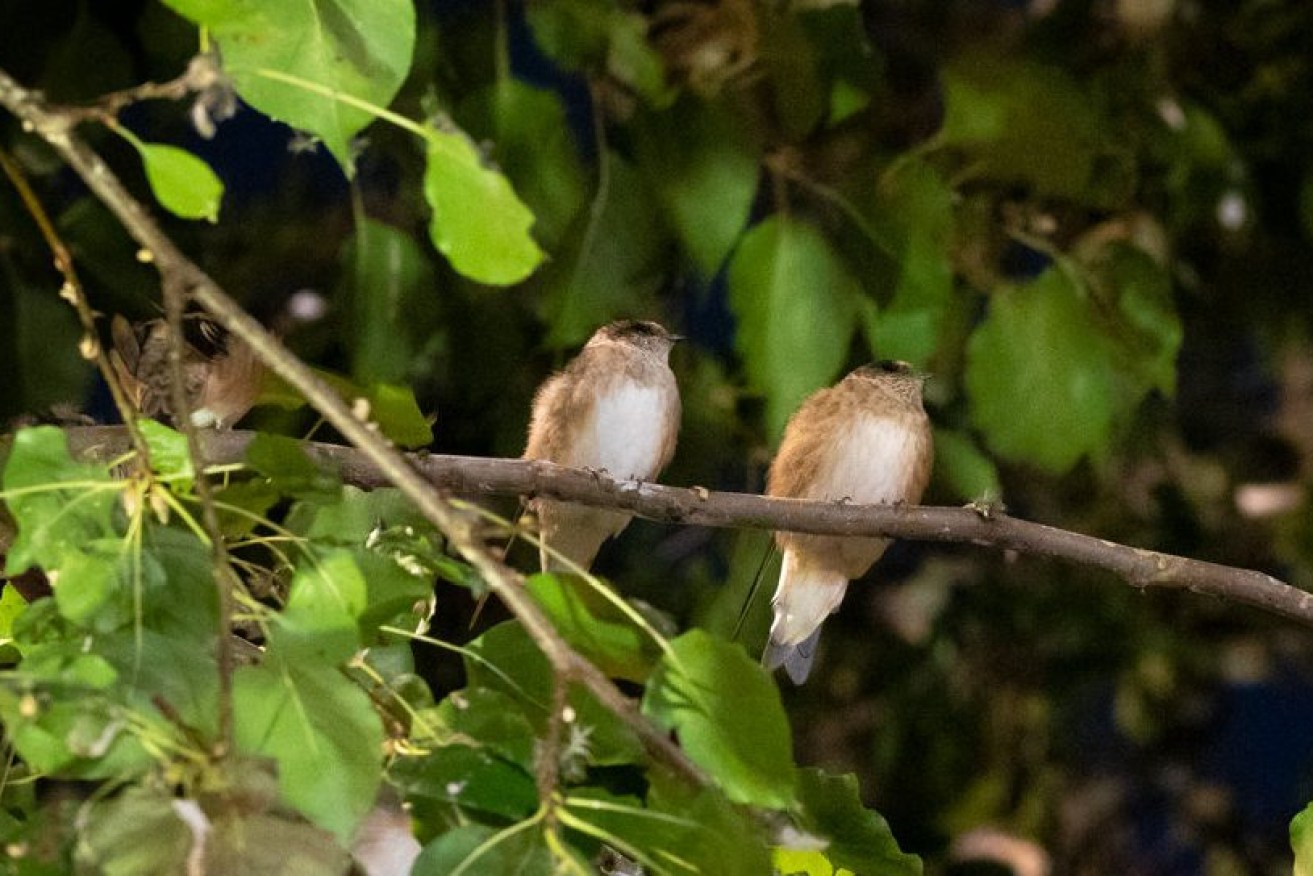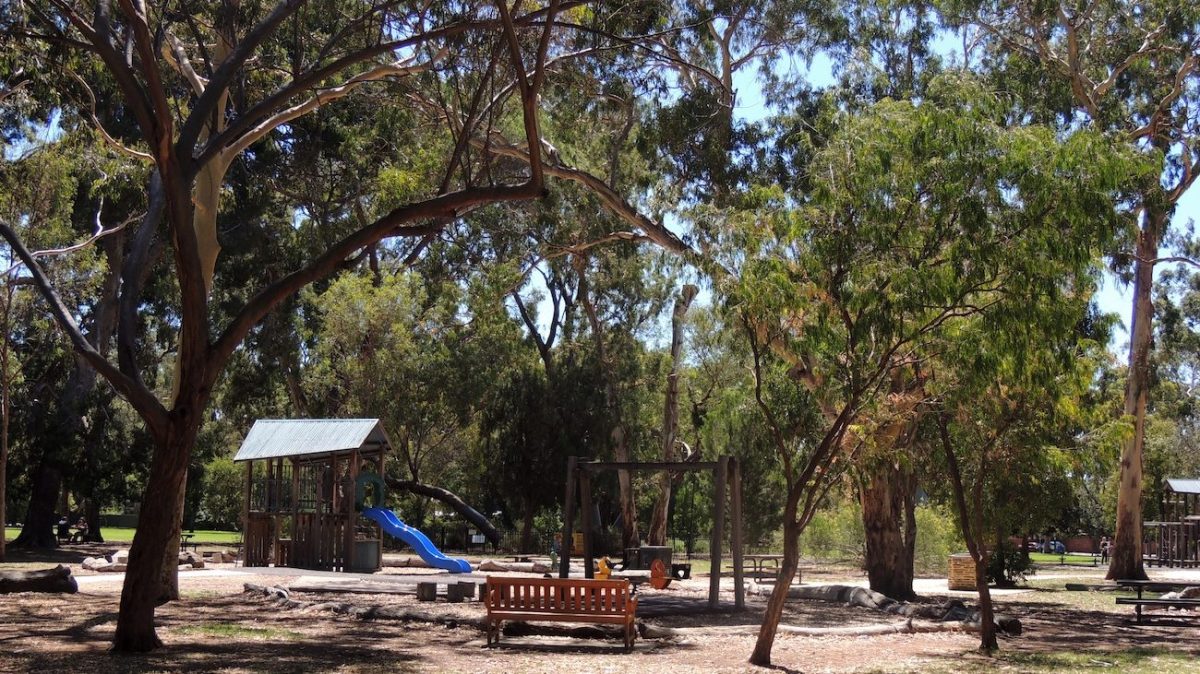Call for tree change on canopy protection
State laws protecting old trees with big trunks should be broadened to include smaller species like pear trees in Leigh Street where thousands of tree martins are roosting, the first hearing of the Urban Forest Inquiry heard this week.


Leigh Street trees shelter the largest house martin bird roost in Australia. Photo: Green Adelaide
Green Adelaide chair Professor Chris Daniels wants the relationship between trees and animals recognised, describing how thousands of tiny birds descend on the popular eating and drinking district at dusk from January to May.
“We have about 10,000 tree martins that come down from the north in the summer, and they feed on the mosquitoes out on the St Kilda wetlands and then they roost in the Callery pear trees in Leigh Street,” he said.
Peregrine Falcons arrive in turn to “eat them” and “there’s this great dogfight of birds going on above one of our most loved recreational evening eating locations in the heart of the city”.
Green Adelaide data shows tree martins are declining in number throughout the Mt Lofty Ranges and Adelaide but Leigh Street is now home to the largest roost of this species anywhere in Australia.
Prof Daniels was the first witness to give evidence to the inquiry as the State Government pushes ahead with its goal to increase the state’s urban canopy by 20 per cent during the next 22 years.
He described legislation protecting “very, very large trees” as not particularly helpful in a state where smaller, rare trees like mallee box, grey box and pink gums with broad canopies need to be saved.
Heywood Park is home to the last remaining Grey Box gum trees on the Adelaide Plains and some living in the Unley Park green space pre-date European settlement.

Gums in Heywood Park. Photo: Emma Monceaux
Current laws protect regulated or significant trees growing in metropolitan Adelaide, the Adelaide Hills or Mount Barker Council area where any work affecting their health must receive approval.
Regulated trees have a two metre or more circumference when measured one metre above natural ground level while a significant tree has a circumference of three metres or more.
“We need to actually rethink the significant and regulated tree legislation to get away from just diameter of the trees, we need to be thinking about the canopy, we need to be thinking about the species,” Prof Daniels said.
The Environment, Resources and Development Committee inquiry into the urban forest will lead to a report on best practice and innovative measures in selecting and maintaining trees to improve resilience – with a focus on trees for urban infill developments.
It is exploring legal and regulatory options in improving the resilience and longevity of trees in the state’s urban forest.
Prof Daniels’ wide-ranging evidence included commenting that artificial lawns are still causing “a bit of a disaster” for the state’s environment after they grew in popularity in response to the drought in the early 2000s.
And butterflies, frogs and birds are proving to be the best educational honey traps in enticing more Adelaide homeowners to plant native gardens.
There were heat maps shown to the committee, where suburbs devoid of trees and plants like Royal Park in Adelaide’s north west urgently need new vegetation.
Daniels warned the suburb could be dealing with 50-degree heat as early as this week as it has no canopy to lessen the heat blow.
Extensive new road projects devoid of greenery are seeing more bitumen branching out through the urban landscape and absorbing “huge amounts of heat during the day and this is radiating out at nights”.
And Daniels said it was important to incorporate greening as mandatory in new developments from housing to highways with the state’s most significant challenge the “push to remove trees”.
The government’s 30-Year Plan sets a target to increase urban green cover by 20 per cent by 2045 for council areas with less than 30 per cent of tree canopy, and no net loss of trees for councils which are already past that threshold.
Planning Minister Nick Champion said the State Government was committed to ensuring “the state is matching the country’s best practice regulations to protect and increase the green canopy in Adelaide”.
The government commissioned “an independent panel of planning experts to review key areas of tree regulations, which includes whether the circumference of a regulated or significant tree should be reduced to capture a broader range of mature trees,” he said.
“Findings from this review will help shape the government’s response on potential changes to tree regulations,” Champion said.
The Expert Panel’s review coincides with the State Planning Commission’s ongoing work into significant and regulated tree protections.
“We also want to be a Government that leads by example, and as such I have asked State Department chief executives to ensure, when planning for new developments, that early consideration be given to the retention of trees during the planning and design phase,” he said.




